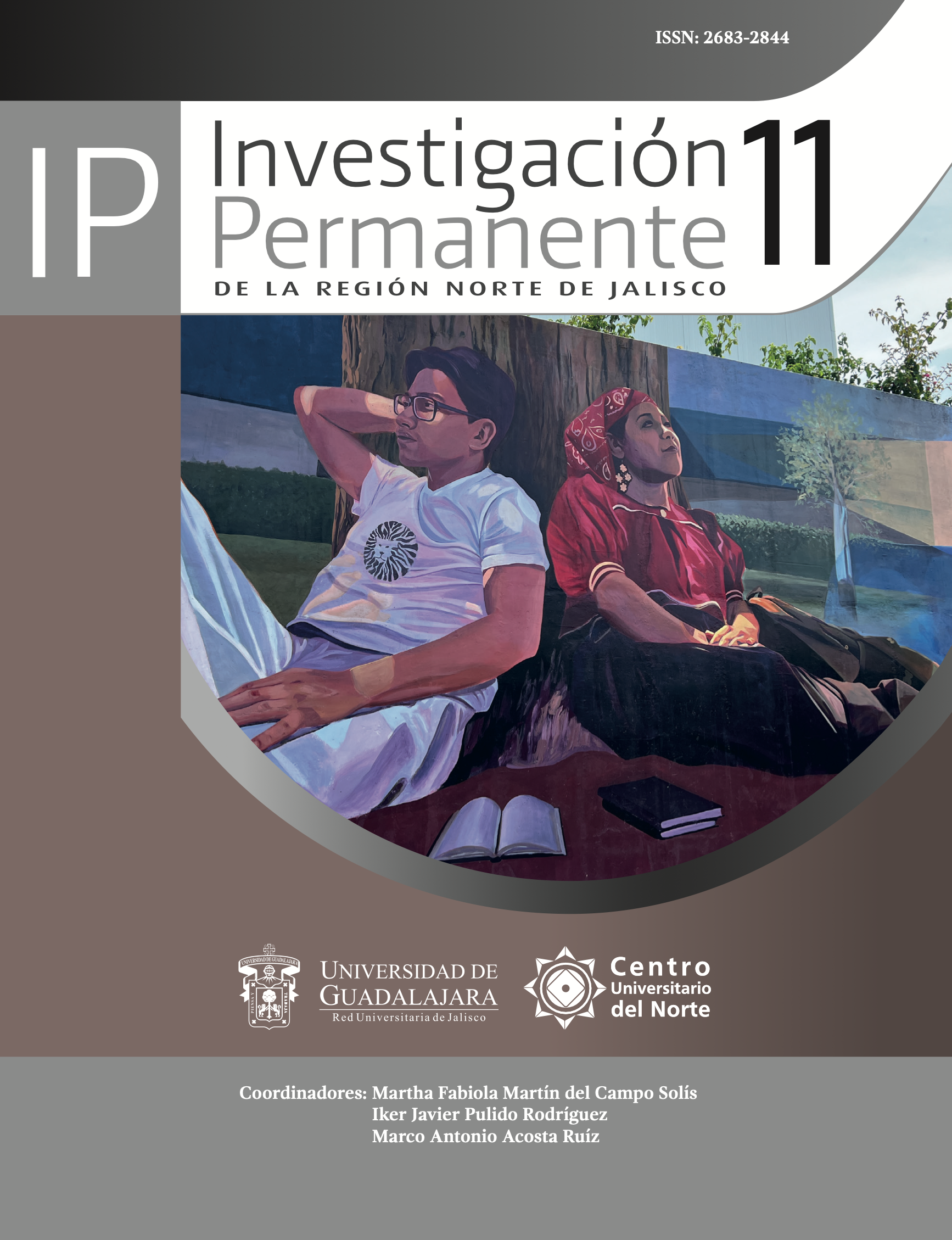Abstract
Weight gain in growing sheep and economic savings in feeding were evaluated through a diet made from protein-enriched and dehydrated cactus with the inclusion of mesquite. This input is produced with raw materials that tolerate water stress, present in arid and semi-arid regions such as the northern region of Jalisco, which allows livestock activity to be directed towards sustainability.
To carry out the study, three different diets were prepared. Treatment 3 served as control; included a commercial balance for sheep + corn stover, while ground corn + soybeans + canola + urea + corn stover + different proportions of the base input of enriched cactus pear cactus dehydrated with mesquite were added to treatments 1 and 2. These last two ingredients are local. All diets were balanced to achieve a protein content of 16%.
Also, 15 sheep were selected to form three groups, ensuring a uniform distribution in the initial weights. These groups were subjected to the dietary regimen for a period of eight weeks.
Analysis of variance and the Tukey test were used to analyze the results obtained. Similar weight gain was observed in all groups, suggesting that the processed diets have similar nutritional properties. This indicates that the input made from cactus and mesquite met the objective, and its potential to replace other protein raw materials that increase feed costs was demonstrated.
In addition to reducing the waste of mesquite and cactus, underused raw materials, these are an alternative that not only benefits economically by reducing feed costs, but also contributes to environmental sustainability by reducing the demand for more scarce and expensive resources.
References
Aguilar Yáñez, M. I. (2010). Respuesta productiva y calidad de la carne de corderos suplementados con nopal fresco y deshidratado (Tesis de maestría en Ciencias). Institución de Enseñanza e investigación en Ciencias Agrícolas, Colegio de Postgraduados. Montecillo, Texcoco, Estado de México. http://hdl.handle. net/10521/255
Castillo Hernández, K. (2013). Evaluación de la inclusión de nopal (opuntia ficus indica) en combinación de enzima celulasa sobre la respuesta productiva en ovinos (Tesis de maestría en Ciencias en Zootecnia). Universidad Autónoma Agraria Antonio Narro. Saltillo Coahuila, México. http://repositorio.uaaan.mx:8080/xmlui/ bitstream/handle/123456789/6873/LOPEZ%20GUARIN%2C%20GUSTAVO%20%20TESIS.pdf?sequence=1
Comisión Nacional del Agua (Conagua, s.f.). Monitor de Sequia de México. Servicio Meteorológico Nacional. https://smn.conagua.gob.mx/es/climatologia/monitor-de-sequia/monitor-de-sequia-en-mexico
Fernández Marcial, S. J. (2019). Análisis preferencial de vainas de mezquite (Prosopis laevigata) utilizadas para la alimentación de ovinos, en el Municipio de Tecamachalco, Puebla (Tesis de ingeniería en Agronomía y Zootecnia). Benemérita Universidad Autónoma de Puebla. Tecamachalco, Puebla. https://hdl.handle. net/20.500.12371/16877
Flores Hernández, A., Macías Rodríguez, F. J., Meza Herrera, C., García Herrera, G., Esquivel Arriaga, O., Ortiz Salazar, J. y Hernández Bautista, C. (2019). Fermentación semisólida del nopal (Opuntiaspp) para su uso como complemento proteico animal. Revista De Geografía Agrícola, (63), 87-100. https://doi.org/10.5154/r.rga.2019.63.04
Franco-Guerra, F., Sánchez, R. M., Camacho, R. J., Hernández, H. J., Villareal EB, O., Rodríguez C, E. y Marcito A, O. (2014). Consumo de especies arbóreas y arbus-
tivas y sus frutos y herbáceas por cabras en pastoreo trashumante en la Mixteca Oaxaqueña, México. Tropical and Subtropical Agroecosystems, 17(2), 267-270. http://www.redalyc.org/articulo.oa?id=93931761014
Guevara Pérez, C. I. (2015). Respuesta al estrés hídrico en algunas especies consideradas maderables del matorral espinoso tamaulipeco (Tesis de maestría en Ciencias Forestales). Universidad Autónoma de Nuevo León. Monterrey, México. http:// eprints.uanl.mx/id/eprint/13920
Hernández Sampieri, R. F., Fernández Collado, C. y Baptista Lucio, M. del P. (2014).
Metodología de la Investigación, sexta edición. McGraw-Hill.
Mejía-Haro, I., García-Sánchez, A. A., Martínez-Mireles, J. M., Aréchiga-Flores, C. F., Silva-Ramos, J. M. y Ramos-Dávila, M. (2023). Efecto de vaina de mezquite (Prosopis laevigata, Fabales: Fabaceae) sobre fermentación ruminal y parámetros productivos en ovinos en engorda. Acta Agrícola y Pecuaria, 9(1), e0091006. https://doi.org/10.30973/aap/2023.9.0091006
Muciño Castillo, G. (2014). Evaluación nutricional de harina de nopal en dietas para borregos (Tesis de maestría en Ciencias). Institución de Enseñanza e Investigación en Ciencias Agrícolas, Colegio de Postgraduados. Montecillo, Texcoco, Estado de México. http://hdl.handle.net/10521/2305
Organización de las Naciones Unidas para la Alimentación y la Agricultura (faostat) (2021). Cobertura de la tierra. pastizales. Consultado el 4 de junio de 2024 en https://www.fao.org/faostat/es/#data/LC
Paula Huacho, G. M. (2021). Las razas ovinas de carne alimentadas con dietas a base de nopal (Tesis de ingeniería en Zootecnia). Escuela Superior Politécnica de Chimborazo. Riobamba, Ecuador."

